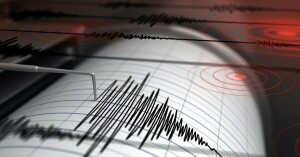 BEIJING: Growth in China's investment, retail sales and factory output all missed forecasts in January and February, leaving investors with little doubt that the economy is still losing steam and in need of further support measures.
BEIJING: Growth in China's investment, retail sales and factory output all missed forecasts in January and February, leaving investors with little doubt that the economy is still losing steam and in need of further support measures.
The figures came a day after data showed deflationary pressures in the factory sector intensified in February, and is likely to reinforce expectations of more interest rate cuts and other policy loosening to avert a sharper slowdown in the world's second-biggest economy.
Industrial output grew 6.8 percent in the first two months of the year compared with the same period a year ago, the National Bureau of Statistics said on Wednesday, the weakest expansion since late 2008.
Analysts polled by Reuters had forecast a 7.8 percent rise, down slightly from December.
"This is indicative of the new normal advocated by President Xi," said Chester Liaw, an economist at Forecast Pte in Singapore.
"Double-digit industrial production levels will be a thing of the past. It is highly unlikely that retail sales will hold out for long above the 10 percent mark as well."
Retail sales climbed 10.7 percent in the first two months, missing expectations for a 11.7 percent rise.
Fixed-asset investment, a crucial driver of the Chinese economy, rose 13.9 percent in January and February from a year ago, also under estimates for a 15 percent gain.
China combines its January and February data releases for investment, retail sales and factory output to minimise distortions from the Lunar New Year holiday, which fell in January last year but occurred in February this year.
Sluggish factory activity reinforces expectations that China's economic growth will slow to a quarter-century low of around 7 percent this year from 7.4 percent in 2014, even with expected additional stimulus measures.
Power generation rose 1.9 percent in January and February from a year earlier, well below 3.2 percent seen in all of 2014, which was the slowest growth rate in 16 years.
The Chinese economy has had a rough ride in the last 15 months as a property downturn compounded slackening growth in foreign and domestic demand and persistent industrial overcapacity. A widening corruption crackdown also has weighed on everything from investment to retail sales.
Policymakers have cut interest rates twice since November, and in early February reduced the amount of cash that banks must hold as reserves in a bid to spur lending.
But with consumer inflation hovering near the government's "vigilance level" of around 1 percent, analysts expect the central bank to lower reserve requirements and interest rates again to stoke growth, in what would be its biggest easing campaign since the depths of the global financial crisis.
The central bank has singled out the rise in real interest rates on the back of cooling inflation as a further drag on the economy, especially as many companies are struggling with heavy debt levels.





















Comments
Comments are closed.